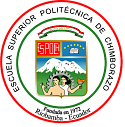Prediction of potential customers using K nearest neighbor in the Riobamba Cooperative business area
DOI:
https://doi.org/10.47187/perspectivas.4.1.150Keywords:
Credits, Data Mining, KDD, K-NN, Potential ClientsAbstract
K Nearest Neighbor (KNN) is one of the algorithms that enables diagnosis in real time, and supports decisions making. For this research, the database of the business area of the Cooperativa de Ahorro y Crédito Riobamba Ltda. was considered, a databank that stores a large amount of information from customers. This data was used to select relevant information maintaining and respecting the clients’ confidentiality. The main objective of the project is to predict potential customers by applying the KNN algorithm. The results demonstrate that k nearest-neighbor is suitable for predicting potential clients were predicted according to their demographic and economic background and internal factors of Cooperativa Riobamba Ltda., resulting this, a useful resource for the institution in making decisions regarding future credit offers. It is highlighted the importance of taking advantage of the information that is managed in each institution and even more if it is within the financial sector because both, clients and the institution benefit. The former since they would have more credit options and the financial institutions because they might increase their portfolio of clients and improve their service.
Métricas
References
Mauricio Miranda, and Jheser Guzmán. Análisis de la deserción de estudiantes universitarios usando técnicas de minería de datos. Formación universitaria, 10(3), p. 61-68, 2017.
Cesar Higinio Menacho Chiok. Predicción del rendimiento académico aplicando técnicas de minería de datos. Anales Científicos. Universidad Nacional Agraria La Molina, 78(1), p. 26–33, 2017.
Sergio Valero, Alejandro Salvador, and Marcela García. Minería de datos: predicción de la deserción escolar mediante el algoritmo de árboles de decisión y el algoritmo de los k vecinos más cercanos. Ene 779(73), p. 33, 2005.
Jahir Gutiérrez, and Bernardo Molina. Identificación de técnicas de minería de datos para apoyar la toma de decisiones en la solución de problemas empresariales. Revista Ontare 3(2):33-51, 2015.
José Molina, and Jesús García. Técnicas de Minería de Datos basadas en Aprendizaje Automático. Técnicas de Análisis de Datos, 96-266, 2008.
Zhenni Feng, and Yanmin Zhu. A survey on trajectory data mining: Techniques and applications. IEEE Access 4, 2056-2067, 2016.
Angelica Duca, Clara Bacciu, and Andrea Marchetti. A K-nearest neighbor classifier for ship route prediction. OCEANS 2017-Aberdeen. IEEE, p. 1-6, 2017.
Szilárd Vajda, and K. C. Santosh. A fast k-nearest neighbor classifier using unsupervised clustering. International conference on recent trends in image processing and pattern recognition. Springer, Singapore, p. 185-193, 2016.
María Moreno, and Vivian López. Uso de Técnicas No Supervisadas en la Construcción de Modelos de Clasificación de Ingeniería de Software. Departamento de Informática y Automática. Universidad de Salamanca, 2015.
Y. Belinchón. Minería de datos. Obtenido de. https://es. scribd. com/document/308398381/15mem-pdf, 2015.
María N. Moreno García, Luis A. Miguel Quintales, Francisco J. García Peñalvo, and M. José Polo Martín. Aplicación de Técnicas de Minería de Datos en la Construcción y Validación de Modelos Predictivos y Asociativos a Partir de Especificaciones de Requisitos De Software. ADIS, 2001.
S. R. Timarán-Pereira, I. Hernández-Arteaga, S. J. Caicedo-Zambrano, A. Hidalgo-Troya, and J. C. Alvarado-Pérez. El proceso de descubrimiento de conocimiento en bases de datos. En Descubrimiento de patrones de desempeño académico con árboles de decisión en las competencias genéricas de la formación profesional. Bogotá: Ediciones Universidad Cooperativa de Colombia, pp. 63-86, 2016.
Thomas Cover, and Peter Hart. Nearest neighbor pattern classification. IEEE transactions on information theory, 13(1), p. 21-27, 1967.
Veena Vijayan, and Aswathy Ravikumar. Study of data mining algorithms for prediction and diagnosis of diabetes mellitus. International journal of computer applications, 95(17), 2014.
Sadegh Bafandeh Imandoust, and Mohammad Bolandraftar. Application of k-nearest neighbor (knn) approach for predicting economic events: Theoretical background. International Journal of Engineering Research and Applications, 3(5), p. 605-610, 2013.
George Darren, and Paul Mallery. IBM SPSS statistics 26 step by step: A simple guide and reference. Routledge, 2019.
Jose Santamaría, and Javier Hernández. Microsoft SQL Server. SQL SER vs MY SQL, p. 1-6, 2016.
Markus Hofmann, and Ralf Klinkenberg. RapidMiner: Data mining use cases and business analytics applications. CRC Press, 2016.
Emeditor.com. EmurasoftEmEditor. [Online]. Available: https://www.emeditor.com/.
Ingrid Russell, and Zdravko Markov. An introduction to the Weka data mining system. Proceedings of the 2017 ACM SIGCSE Technical Symposium on Computer Science Education, 2017.
Downloads
Published
How to Cite
Issue
Section
License
Copyright (c) 2022 Miryan Estela Narváez, Raquel Johanna Moyano Ariasy Moyano Arias, Diego Bernardo Palacios Campana, Geovanny Augusto Izurieta Guamán

This work is licensed under a Creative Commons Attribution 4.0 International License.
Copyright
The authors of the manuscripts will retain their copyright on their articles published in Pespectivas Journal. These rights allow the authors to present their manuscripts in public, prepare derivative works, reproduce them physically by printing and distribute them on their social or research networks. These rights will remain unchanged as long as the authors respect the publication and free access policy of Perspectivas Journal.
Publication Rights
Perspectivas Journal reserves all first publication rights on each of the articles that the authors have sent to its review and publication process. It implies that authors will only exercise their copyright if they state the source and origin of the publication correctly, mainly when they distribute, share, present, or use their articles' total or partial content.














